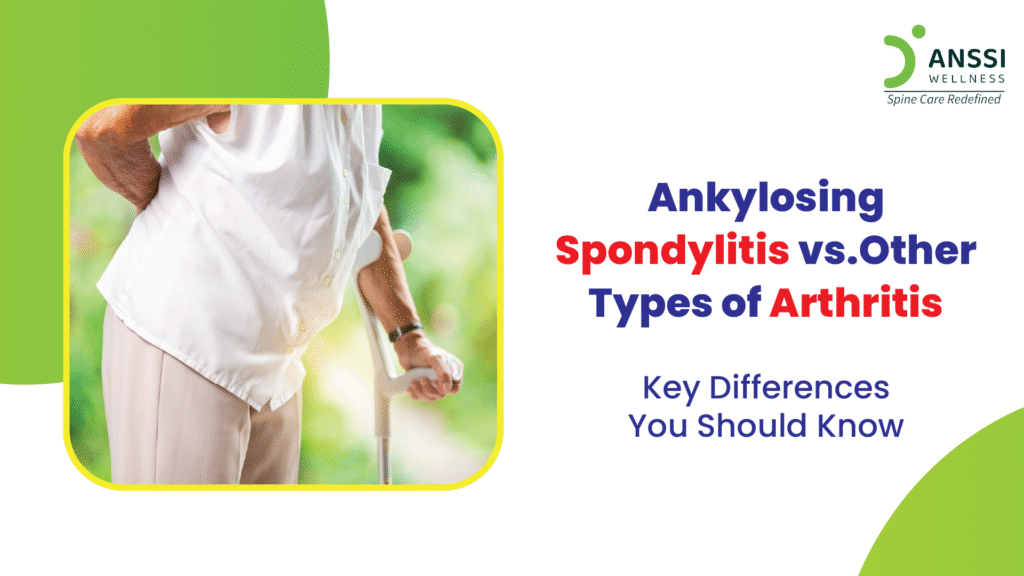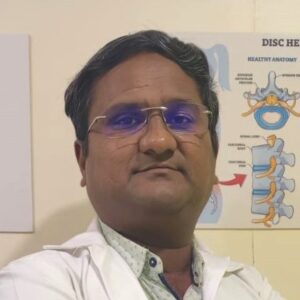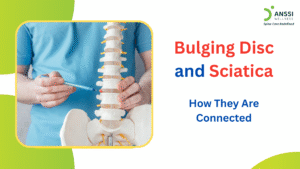Arthritis is a term that refers to a wide range of joint-related conditions, all involving inflammation and pain. While most people are familiar with osteoarthritis or rheumatoid arthritis, Ankylosing Spondylitis (AS) is a lesser-known but serious form of arthritis that primarily targets the spine.
Understanding how AS differs from other types of arthritis is essential for timely diagnosis, effective treatment, and long-term joint health. Each type of arthritis has unique causes, symptoms, and treatment protocols, and confusing them may delay proper care.
What is Ankylosing Spondylitis?
Ankylosing Spondylitis is a chronic, inflammatory arthritis that primarily affects the spine and the sacroiliac joints (where the spine meets the pelvis). Over time, the inflammation can lead to new bone formation, causing sections of the spine to fuse, resulting in stiffness and reduced mobility. AS usually begins in early adulthood and affects men more commonly than women.
People with AS often experience dull pain and stiffness in the lower back, especially in the morning or after periods of inactivity. One of the most distinct features of AS is its link to the HLA-B27 gene, which is found in the majority of AS patients. Left untreated, AS can significantly impact posture, lung capacity, and quality of life.
Common Types of Arthritis Compared
Let’s take a look at how Ankylosing Spondylitis compares with other major types of arthritis:
- Osteoarthritis (OA): The most common form of arthritis, OA results from wear and tear of joint cartilage. It usually affects older adults and commonly impacts the knees, hips, and hands. Symptoms include joint pain, stiffness, and reduced range of motion, often worsening with activity.
- Rheumatoid Arthritis (RA): RA is an autoimmune condition in which the body’s immune system attacks the joint lining. It affects multiple joints symmetrically (e.g., both wrists or knees) and causes swelling, pain, and joint deformity. It may also affect organs.
- Psoriatic Arthritis (PsA): PsA affects people with the skin condition psoriasis. It can involve any joint, including the spine, and may cause dactylitis (swollen fingers or toes) and nail changes.
Though all forms cause joint discomfort, their origins, affected areas, and disease progression vary significantly.
Key Differences Between Ankylosing Spondylitis and Other Arthritis Types
To better understand AS, let’s compare it to OA, RA, and PsA on several important factors:
| Feature | Ankylosing Spondylitis | Osteoarthritis | Rheumatoid Arthritis | Psoriatic Arthritis |
|---|---|---|---|---|
| Cause | Autoimmune/genetic | Degenerative (wear-and-tear) | Autoimmune | Autoimmune, often linked to psoriasis |
| Typical Onset Age | Late teens to 40s | 50+ | 30-60 | 30-50 |
| Affected Areas | Spine, sacroiliac joints | Weight-bearing joints | Small joints (hands, wrists) | Spine, fingers, knees |
| Morning Stiffness | >30 minutes | <30 minutes | >1 hour | >1 hour |
| Joint Swelling | Less common | Mild or absent | Common | Common |
| Spinal Fusion | Common over time | Rare | Rare | Occasional |
One of the clearest signs of AS is stiffness that improves with movement, unlike OA, where pain worsens with activity. Additionally, back pain from AS tends to wake individuals in the early morning hours, something uncommon in other forms.
Diagnosis and Treatment Options
Accurate diagnosis of Ankylosing Spondylitis often requires a combination of medical history, physical examination, imaging tests (X-rays or MRI), and blood tests for HLA-B27.
Treatment for AS and other arthritis types differs due to the nature of the disease. For AS, goals include managing inflammation, maintaining posture, and preserving spinal mobility.
Non-Surgical Treatment Options for Ankylosing Spondylitis Include:
- Physiotherapy: Tailored exercise routines help improve flexibility and posture. Stretching and strengthening exercises are vital to prevent spinal rigidity.
- Posture Training: Teaching patients how to sit, stand, and sleep properly can reduce spinal stress and delay fusion.
- Pain Management: Anti-inflammatory medications like NSAIDs are commonly prescribed. In some cases, biologic medications that target the immune system are used.
- Lifestyle Changes: Maintaining a healthy weight, quitting smoking, and regular physical activity can improve outcomes and reduce symptom severity.
Surgery is rarely needed in AS unless there’s severe spinal deformity or hip joint involvement.
When to See a Doctor
If you’re experiencing chronic lower back pain, especially if it starts before age 40 and improves with exercise, not rest, you should consult a spine or rheumatology specialist. Early diagnosis is crucial in managing AS and preventing long-term complications. Unlike OA or RA, which often show up in joint X-rays, AS may only be detected in the early stages through MRI.
About ANSSI:
ANSSI Wellness focuses on improving the quality of life for patients suffering from spinal issues, aiming to provide relief where other conventional treatments have failed. Through advanced non-surgical spinal decompression treatment, ANSSI is committed to helping patients avoid surgery and recover in a safe, effective, and compassionate environment.
Connect with ANSSI Wellness on LinkedIn, Instagram, and Facebook for expert guidance.




